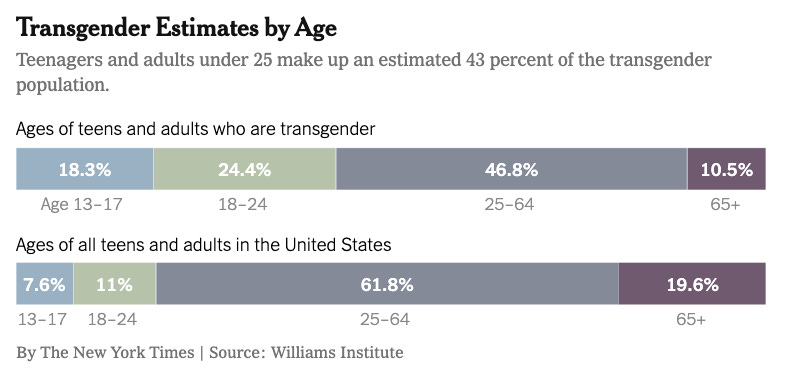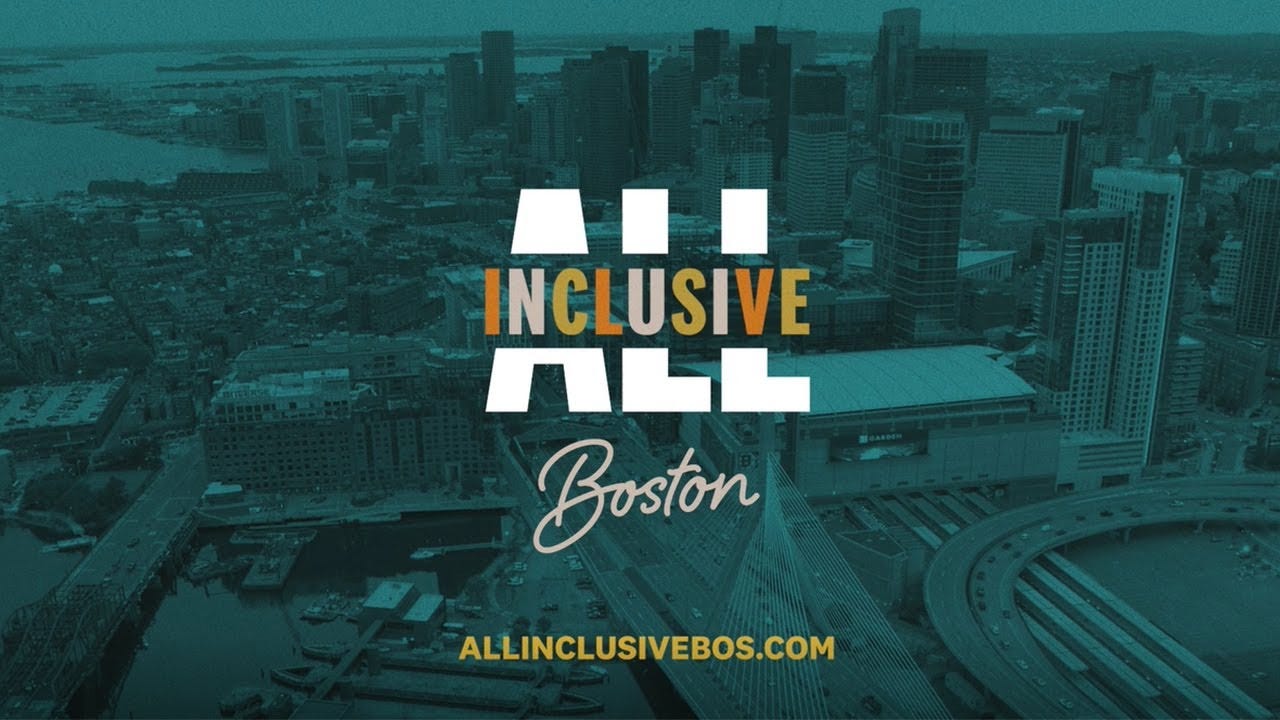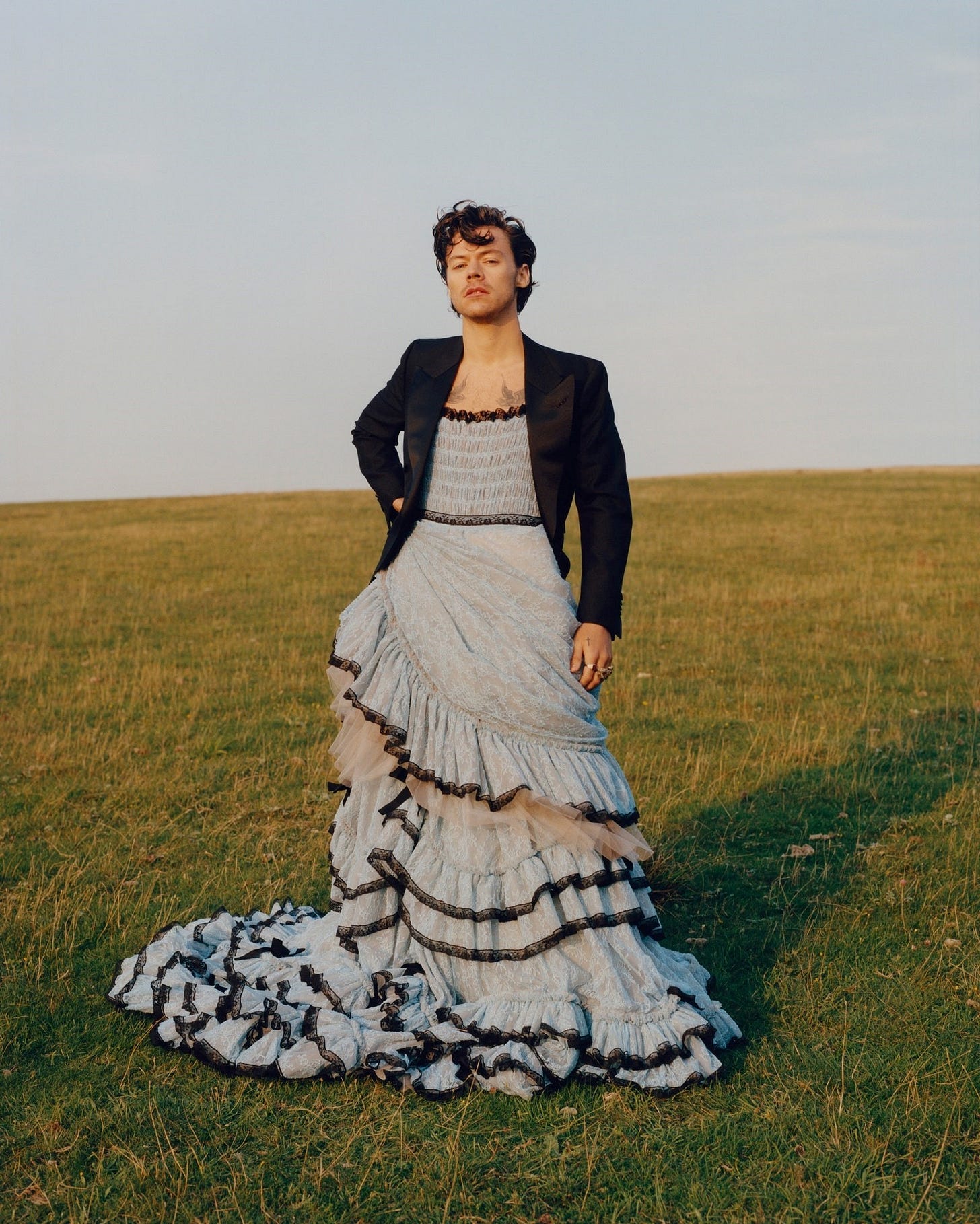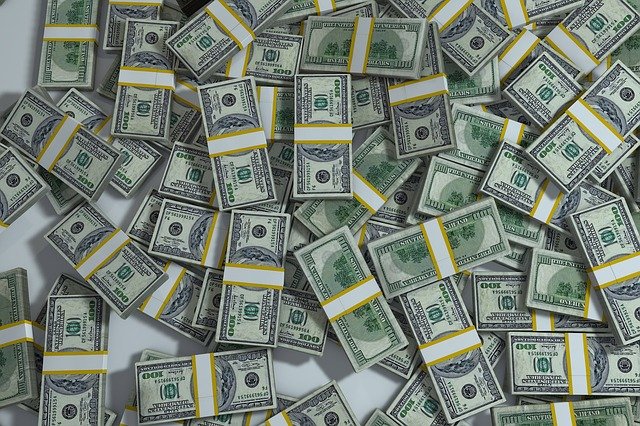Yves here. Jared Holst looks at gender proliferation, which per the post below is so elastic as to include people who identify as not human. I have been told that the Thais, depending on who is counting, have between 11 and 17 genders, and they include categories like tomboyish but straight women and men who like that type.
By Jared Holst, the author at Brands Mean a Lot, a weekly commentary on the ways branding impacts our lives. Each week, he explores contradictions within the way politics, products, and pop-culture are branded for us, offering insight on what’s really being said. You can follow Jared on Twitter @jarholst. Originally published at Brands Mean a Lot
‘Let a hundred sexes bloom!’ This must go beyond insisting on recognition for a wider range of identity categories – a move which, as with the numerous self-categorizing options available to us on Facebook, can generate a ‘plural but static constellation’, in which gender continues to bear the weight of signifying something beyond itself (attitudes, capacities, affinities, consumer behaviours, and so on). The aim of this proliferation is not the beautiful blooming of a hundred drop-down menu options, but the stripping away of social ramifications associated with the heterosexual matrix.
– Helen Hester, Xenofeminism, 2018
Not only is Hester’s advocacy important, it’s the future.
As a social construct, gender is a categorization tool. Yet for all its uses, it isn’t a tool fit for every job. While gender’s disintegration may initially impede our ability to categorize people based on the signifiers Hester lists above, its will free people from hastily made judgements and open up new possibilities for human connection, culture, and governance. Hester’s book, Xenofeminism, from which the above quote is pulled, was published in 2018 and it’s clear we’re already in the midst of letting ‘a hundred sexes bloom’. As gender’s boundaries melt away, it’s evolving to become a construct which doesn’t necessarily even need to map to human characteristics.
While liberation–in whatever form it may take–may be the primary accelerant for social change, the market is usually right behind it. Given the erosion of gender and its signifiers, and commerce’s ability to accelerate social change, I foresee a future where brands could be identifiable genders.
Source: https://www.teenvogue.com/story/pepsi-commercial-kendall-jenner-reaction
Whether it’s the summer of love, women’s equality, the Black Lives Matter movement, or Pride, the market is incentivized to sell social movements back to us. By doing so, brands ingratiate themselves to their audiences and attempt to align with the cause such that anytime it’s brought up, people will think of the brand as well.
This manifests in all kinds of ways. It’s why Bank of America has a float in your city’s Pride parade. It’s why Kendall Jenner is on video handing a frosty Pepsi to a policeman (seen above). It’s why if you ask it, Alexa will tell you it doesn’t have a gender. It’s even why cities market themselves in certain ways for tourism (‘All Inclusive Boston’ comes to mind). This isn’t a recent phenomenon either: I was born in 1985 and somehow still know the summer-of-love-aping “I’d like to buy the world a Coke” jingle. Rosie the Riveter, now an iconic cultural image, was originally a design sponsored by the Westinghouse Corporation during World War II meant to encourage women to work in manufacturing.
 Source: https://www.nytimes.com/2022/06/10/science/transgender-teenagers-national-survey.htmlption…
Source: https://www.nytimes.com/2022/06/10/science/transgender-teenagers-national-survey.htmlption…
Alexa and its ilk may be genderless, but it isn’t just tech which is shifting away from the gender binary. 5.1% of U.S. adults younger than 30 now identify as trans or non-binary. The Williams Institute, via the New York Times, reports that‘teenagers and adults under 25 make up an estimated 43% of the transgender population’. And, according to The Trevor Project’s 2021 National Survey on LGBTQ Youth Mental Health, 26% of LGBTQ youth identify as non-binary.
This is all to say, the gender fluidity of today’s youth is greatly reducing gender’s overall viscosity.
“We’re all born naked, And the rest is drag” – RuPaul
Although difficult to measure objectively, cultural acceptance and inclusivity of trans and non-binary identification is gradually increasing as well. There are now 22 states–plus Washington D.C.–which allow individuals to select the gender neutral ‘X’ on their driver’s licenses or birth certificates. There’s non-binary representation in children’s shows such as Cartoon Network’s ‘Steven Universe’ and Dreamworks/NBC’s ‘Madagascar: a Little Wild’ and representation in adult media such as ‘Billions’ (boring) and ‘Star Trek: Discovery’ (too uninterested to care).
The internet, as it does to all things, has hastened the development of the ‘hundred genders’ prognostication by fertilizing new genders. Two such are Otherkins and Xenogenders.
As defined by the unofficial Otherkin wiki, Otherkins are:
“…those who identify in some nonphysical way as nonhuman or not fully human, more specifically beings who do not currently exist on earth…”
Xenogender, according to the unofficial wiki, is defined as:
“…umbrella term in which one’s gender is not connected to the binary or non-binary spectrum, and is instead crafted with other methods of gender categorization. This may include genders that are related to animals, plants, or other things that are not traditionally a ‘gender.’”
Like Thomas’ English Muffins, the internet has nooks and crannies galore. It’s in those nooks and crannies where just about anyone can find the solidarity they need to bring their digital selves into physical reality. Whether you’re a glob of butter hoping to link up with other globs to talk about how there’s a world wide cabal of Satan worshippers who rule the world or a sweet spread of grape jelly looking to commiserate about your gender existing outside the established binary, there’s a space for you. This isn’t to say the respective plights of Qanon and nonbinary people are the same, it’s only to illustrate the spectrum of spaces available online. In fact, while the online to IRL coming out of Qanon ding dongs has been unequivocally negative, the online to IRL coming out of those feeling something incongruous between their physical bodies and their internalized selves has pushed acceptance and culture forward in a myriad of positive ways, not least of which is the gradual obsolescence of gender itself.

If you hadn’t noticed, the unofficial Xenogender and Otherkin websites are ad-supported. Like I said, commerce is never far behind and the dovetailing of commerce and gender obsolescence isn’t that far off. With each passing year, gender becomes more fluid. Not just between the male/female binary, but between many other distinct identities. If Kendall Jenner and Pepsi can make a Black Lives Matter advertisement, is it crazy to conceive of Planet Fitness encouraging people–with inducements like discounts and personal training–to identify as Planet Fitness? PF’s yellow/purple colorway, no lunk/meathead philosophy, and low prices already appeal to several marketable segments, not just straight men looking to get a pump in. Instead of using brands to form part of what gender you identify as, what if you instead identified as those brands? In essence, brands would co-opt more of the space between your internalized self and your presentation to the world. I’d no longer be Jared, who identifies as a man and as part of my gender presentation wears J. Crew hoodies and Old Spice deodorant. Instead, I’d be Jared, who identifies as Nestlé and presents my gender through the exclusive use of Nestlé foodstuffs and apparel. At this point, brands will have absorbed the personality traits and social signifiers which presently signal a person’s gender.
The efforts companies would take to encourage this would undoubtedly be awful, cringey, and mostly tasteless. Yet, if gender’s reached such ambiguity that it can be so crassly commercialized, we’ll be in a good spot. Is there anything more meaningless than identifying as Jiffy Lube?



